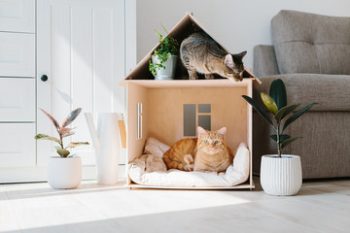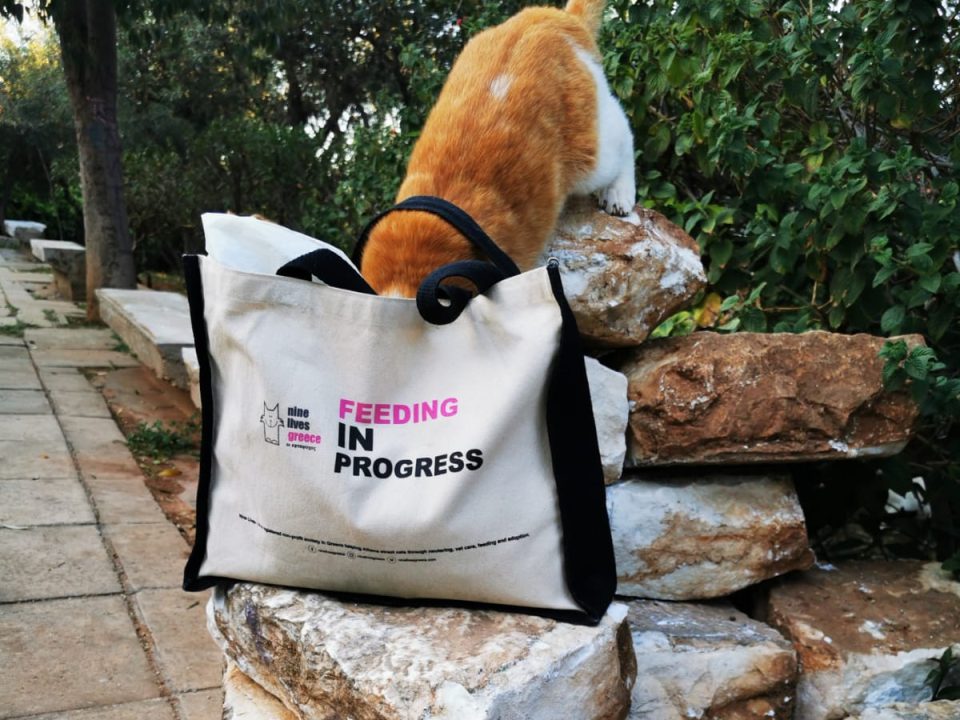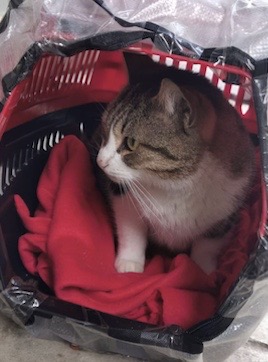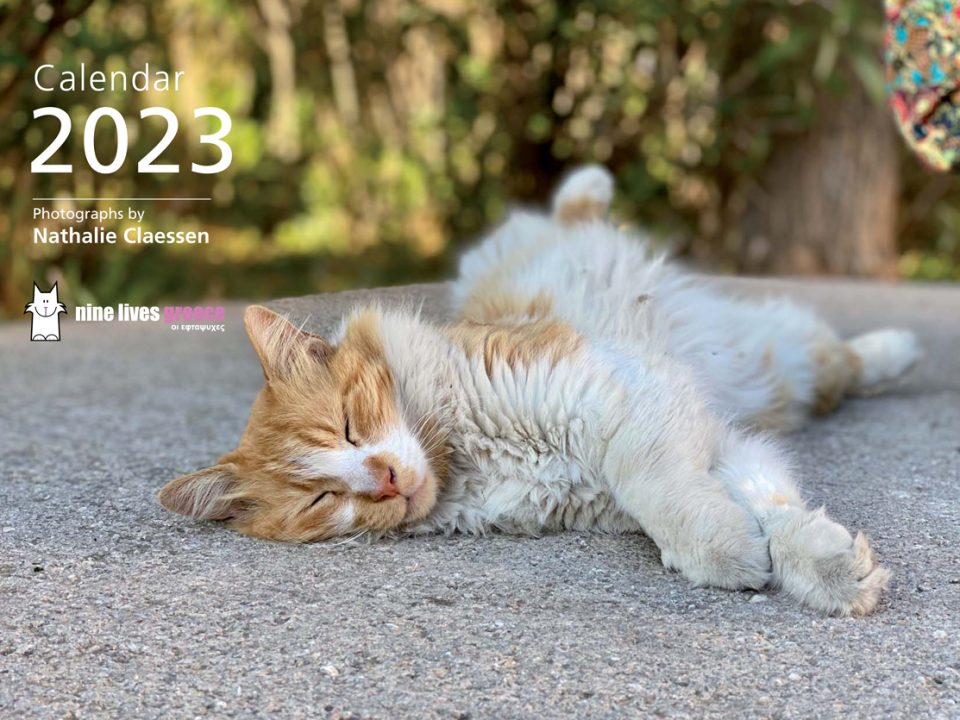By Janelle Leeson
A cat-friendly home encourages your cat to explore, climb, scratch, and hide.
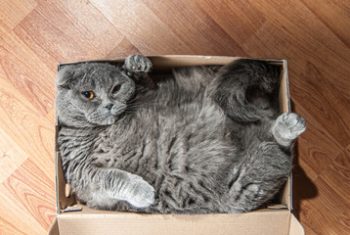 Transforming your living space into a safe haven for your cat is called catification and it aligns with their natural instincts and needs.
Transforming your living space into a safe haven for your cat is called catification and it aligns with their natural instincts and needs.
Catifying your home doesn’t require a complete overhaul, but incorporating a few cat-friendly elements can minimise unwanted behaviours stemming from boredom and a lack of stimulation, like scratching the furniture, excessive meowing, and going to the bathroom outside of the litter box.
Even the smallest apartments and busiest of homes can be cat-friendly with a bit of creativity.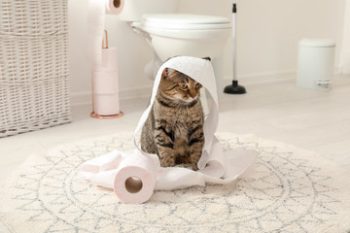
7 Ways to Catify Your Home or Apartment
Despite our best efforts to fully domesticate cats, the truth is that we haven’t yet spent enough time with them to do so. Unlike dogs who have been “man’s best friends” for over 30,000 years, modern cats assumed the role of rodent-hunting sidekicks merely 10,000 years ago. As likely descendants of the African wildcat, our friendly companions
have retained many of their wild instincts, including their predatory nature, agility, and independence.
So how exactly have wild-at-heart modern cats been spending their days indoors? By scratching, pouncing, climbing, and otherwise being a cat, thanks to these great ideas that transform living spaces of all sizes into cat-friendly abodes.
1. Provide the essentials 
Cats prefer to eat a few small meals a day rather than one big meal or grazing. Because they require meat for essential nutrients, cats should be fed commercial cat food that contains animal-based proteins, including whole meat, meals, or byproducts. They also require clean, fresh water, and at least one litter box per cat plus one. Place litter boxes in easily accessible areas throughout the house and away from their food, water, and any jarring sounds.
2. Cat proof
Having a curious cat who can get into all sorts of trouble and eat things they shouldn’t call for cat-proofing your home. It ensures your cat can safely express their natural instincts without encountering any potential hazards.
● Look for hazards like dropped items or sharp objects.
● Prevent falls by adding non-slip features to climbing surfaces and elevated cat
platforms.
● Check all houseplants for potential harm and remove or relocate any dangers.
● Dextile cats may need locked cabinets to prevent mischief.
● Use cord protectors to keep curious chewers safe from electrical wires.
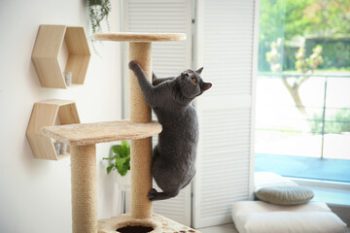 3. Make the most of vertical space
3. Make the most of vertical space
While we often think of space as two-dimensional, cats see the world as a three-dimensional playground. So treat your space like the jungle gym it is by stalling cat shelves, wall-mounted vertical scratching posts, and cat beds perched above your own. “Cats love to climb,” says Stephen Quandt, a feline training and behavior specialist and
owner of Stephen Quandt LLC. And while the act of climbing is fun for cats, the destination should be enticing too. Tall cat trees provide beds and fabric-covered resting spots while perches with sides can help your cat safely sprawl out to enjoy the view.
4. Provide a view of the outdoors
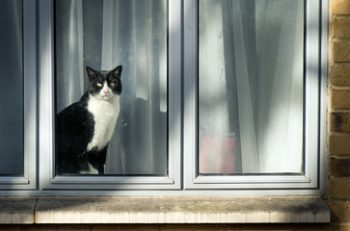
A window perch in a sunny spot provides your cat with a comfortable place to watch birds, squirrels, and other critters go by. Alternatively, reposition your cat tree away from the wall and closer to the window. If you have the means and space, consider expanding your catification efforts beyond the indoors by constructing a catio, an enclosed outdoor space that is safe for your cat to explore.
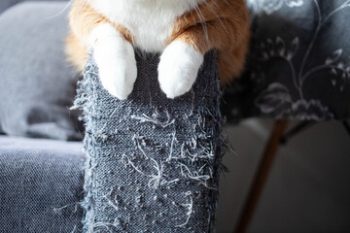
5. Let them scratch
Scratching is important for cats. In the wild, they’d use a tree. But indoors, cats may resort to scratching furniture, carpets, door frames, or mattresses when there’s no better
option. Catify your home with plenty of appropriate scratching surfaces. Cat trees, for instance, should have at least one scratching surface, in addition to built-in beds and perches.
You can also place scratching posts near locations they’ve scratched previously, such as next to the couch, to encourage them to use the post instead of your furniture. If you have more than one cat and they don’t always get along, you may need more than one cat tree or scratching post in the same proximity, says Quandt.
6. Offer hiding places
As natural hunters and prey, cats instinctively seek out hiding spots. While they’ll happily snuggle under your bed, consider offering additional cozy havens like cat caves
and even cardboard boxes. “Placing these hiding spots in quiet areas can encourage their use and help create a stress-free environment,” says Dr. Nicole Savageau, DVM, a veterinarian at The Vets, a US-based mobile veterinary service. She also notes that some cats prefer ground-level ”bush” hiding spots while others prefer elevated ”tree” perches with a view.
7. Replicate the hunt 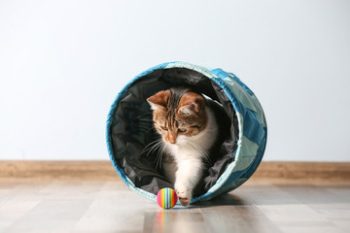
Play with your cat for at least 30 minutes a day, using interactive toys like wands to simulate stalking and pouncing on prey. At mealtimes, incorporate feeding puzzles and foraging mats. Provide your cat with toys they can bat around and play with, even when you’re not home.

Tips for Saving on Cat Supplies
Supplies for cats can add up fast, but they don’t have to. To save money, consider these creative cost-cutting suggestions:
● DIY cat foraging toys. You can make food foraging toys and puzzles with cardboard boxes, toilet paper rolls, and egg cartons, says Dr. Mikel Delgado, a Certified Cat Behavior Consultant (CCBC), Certified Applied Animal Behaviorist (CAAB), and co-owner of Feline Minds. You can find her step-by-step instructions here.
● Second-hand supplies. While it’s cost-saving to reuse pet supplies, keep in mind they could be harboring dangers. For example, used cat furniture like cat trees could be harboring fleas, so be sure to thoroughly sanitize them before bringing them inside. Don’t purchase any plastic cat bowls with scratches and pass on damaged toys that could become a choking hazard.
● DIY pet furniture, toys, and enclosures. This DIY scratching post would make any feline purr, while this homemade cat wack-a-mole toy is sure to keep cats entertained.
● Start with budget-friendly items. Before investing in expensive cat furniture, test different textures and heights with affordable options. This helps you identify your cat’s preferences while saving you money in the long run. Once you know their favorites, you can invest in higher-quality pieces. 